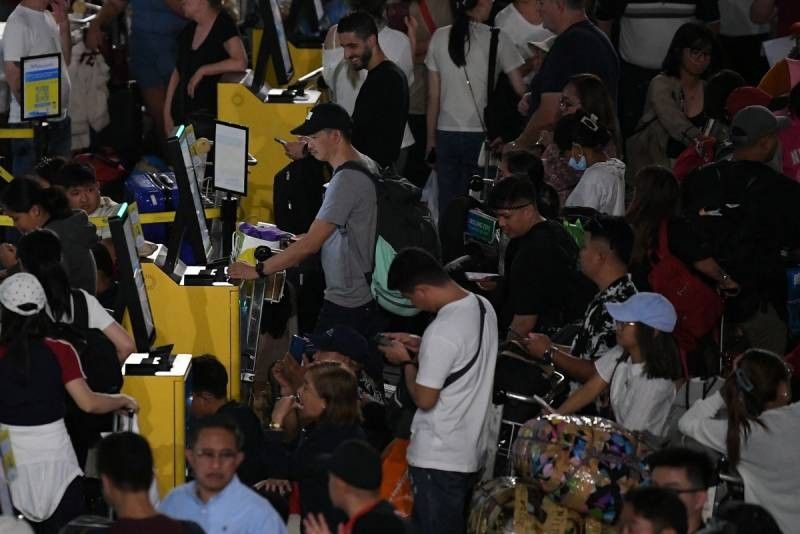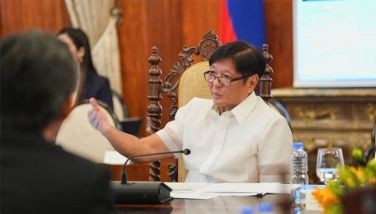Filipinos prowl as permanent migrants post-pandemic

MANILA, Philippines — A Philippine Airlines flight queue of 30 wheelchairs paraded a new face of the Filipino overseas exodus.
That’s a lot of wheelchairs, according to migration researcher Dr. Jocelyn Celero — with her eyes popping at that unusual sight in Terminal 3 of the Ninoy Aquino International Airport last March. “In that [Los Angeles-bound] flight with them, embarkation took two hours.”
Those mostly elderly-aged vacationing Filipino migrants were permanent settlers in the United States, and were then vacationing in the country to annually confirm their profiles with the Philippine Social Security System (SSS). Some of these vacationing Filipinos (balikbayan, as called in Filipino) even monitored their real properties here.
“That will be the trend,” Celero added, not referring to more wheelchaired passengers but to rising immigration to countries with favorable settlement and naturalization opportunities.
Onward elsewhere
The United States is among those countries with enticing permanent migration opportunities that prevailed whether prior to, during, or after the COVID-19 pandemic. The US is a member of the Organization for Economic Cooperation and Development (OECD) bloc of countries which received six million new permanent migration flows in 2021 and 2022.
Within those first two years of the pandemic, the estimated six million new permanent migration flows include over 140,000 Filipinos.
Data from OECD's 2024 International Migration Outlook report showed that over six million new permanent migrants entered the OECD countries as per these countries’ 2022 immigration data.
The over 140,600 Filipinos who entered these countries were among the leading nationalities in 12 of the 37 OECD countries. Leading the pack are the Filipinos who entered the US (36,300 in 2022), Japan (34,400), Canada (22,100), Korea (13,600) and Australia (13,400).
Citing 2021-2022 data, the Philippines ranked 14th among origin countries in terms of "new immigrants to the OECD". India, China and the Russian Federation lead this group of countries.
On to life’s next chapter
OECD data also showed that Filipinos ranked fifth in terms of acquiring the nationality of OECD countries.
In eight OECD countries, Filipino migrants ranked in the top ten of foreigners who became naturalized citizens. These countries include Australia, Iceland. New Zealand and the United States (ranked third apiece); Canada (second); Japan and Korea (fifth apiece); and Norway (seventh).
The US and Canada alone had 66,670 and 41,578 permanent Filipino migrants, respectively, who acquired citizenship in 2022.
Upticks were also seen in terms of the stocks of Philippine-born immigrants in 2022. These include the over 320,000 Filipinos in Australia, the over 719,000 in Canada, the over 159,000 in Italy, the over 276,000 in Japan, and the over 1.946 million Filipinos in the US.
When putting together both the foreign-born and the migrants born in host countries, eight OECD countries put the Philippines in the top 15. Filipinos ranked third in Canada, fourth in Japan, and eighth in Finland, Italy and Korea.
On securing futures
OECD is an international organization that has 37 member-countries —all democracies— under its wings. These “market-based economies” under the OECD work together “to shape policies that foster prosperity and opportunity, underpinned by equality and well-being”.
Many of the OECD countries are noted for favorable permanent migration and naturalization opportunities, subsidized health care, and efficient pension systems. Thus, in the post-pandemic era, Celero thinks Filipinos “will grab” permanent residency opportunities since these migration statuses “provide a strong anchor [for these Filipino migrants] to pursue a transnational retiree lifestyle.”
“Unless we negotiate more health and security agreements with host countries,” Celero said, “I doubt they will return home (Malabo mong mapapauwi).
“They do not want to retire in the Philippines because getting older there means being poor, weak and dependent.”
Migration Secretary Hans Leo Cacdac told attendees of a migrant health conference in Manila that the Department of Migrant Workers (DMW) continues to push for bilateral labor agreements with host countries that include health access arrangements.
These BLAs form part of DMW’s effort “to address the broader needs of Filipino migrant workers,” Cacdac said.
“Access to health care is a priority,” Cacdac told conference attendees November 19.
Cacdac also noted the rising demand for caregivers and some skilled workers in identified regions and host countries, reflecting continued labor demand.
On the rise
The OECD report explained that growing permanent migration and temporary labor migration to OECD countries in 2022 occurred because of “a catching-up effect post COVID-19, growing labor shortages emerging from the [countries’] strong economic recovery, and the onset of demographic changes in OECD countries”.
Temporary migration, in some OECD countries like Canada and Australia, is among the pathways for foreigners to become permanent settlers.
Yet as long as these Filipino permanent settlers have loved ones left behind in the Philippines, these migrants will live transnational lives, Celero said. “Even if they change their nationality —even if they have retired overseas.”
In fact, human geographer Dr. Evangeline Katigbak-Montoya of De La Salle University finds a silver lining with this rising permanent migration by Filipinos.
This rising number of permanent migrants may “translate to increasing investments in the future, especially in real properties since these migrants still have relatively strong ties with the Philippines,” Montoya said.
“Since many of these Filipinos’ integration with locals and societies in host countries is not that deep, they still straddle both worlds, even if some [Filipino permanent settlers] are not low-wage workers,” she explained.
On the catch-up
The rising numbers that cited up to 2022 data came as the Philippines experienced declines in the deployment of migrant workers, and in the exit of registered Filipino emigrants, in 2020 given the COVID-19 pandemic.
The 2020 exodus of overseas Filipino workers (OFWs) or temporary migrant workers (549,841), of registered Filipino emigrants (15,703), and of Filipino spouses of foreign nationals (4,964) reflected 73-to-75 percent drops from 2019 figures, data from DMW and the Commission on Filipinos Overseas (CFO) show.
But come 2021 and 2022, these three types of overseas Filipinos went up when the borders of host countries re-opened. The deployed OFWs reached 742,796 in 2021, 1,205,668 in 2022, and a historic high of 2,330,720 last year, DMW data showed
CFO’s data on permanent residents saw a slight 5.11 increase in 2021 (16,505) and a 147.1 percent uptick in 2022 (40,784). The number of Filipino spouses of foreign nationals even deceased in 2022 (4,891) but went up in 2023 (6,854), CFO data also show.
While Celero saw “the longest line of wheelchairs ever” in any international flight she took, she didn’t want to rain on these compatriots’ parades as permanent settlers and naturalized citizens--and the many more Filipinos following suit.
The OFW Journalism Consortium produces stories on the country’s overseas migration phenomenon.
- Latest
- Trending
































